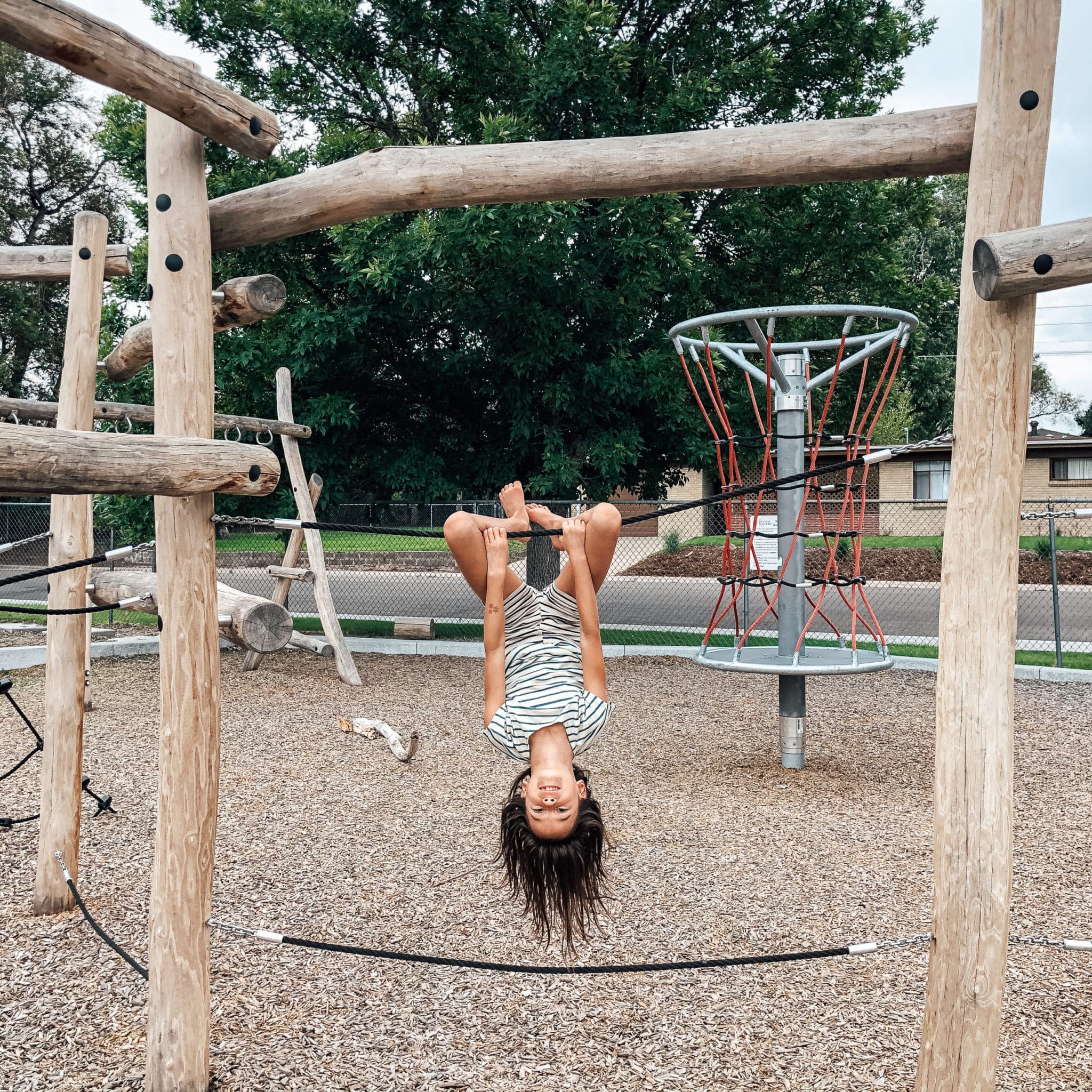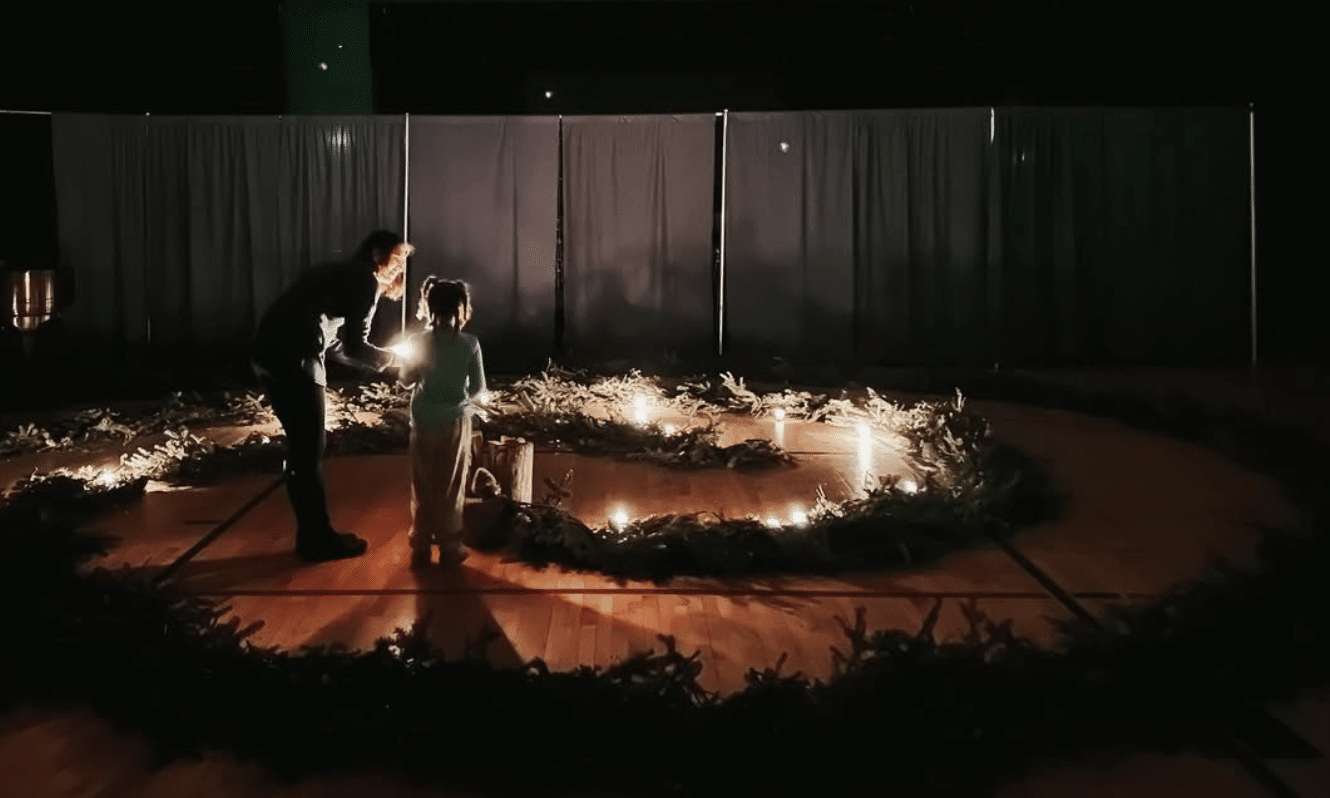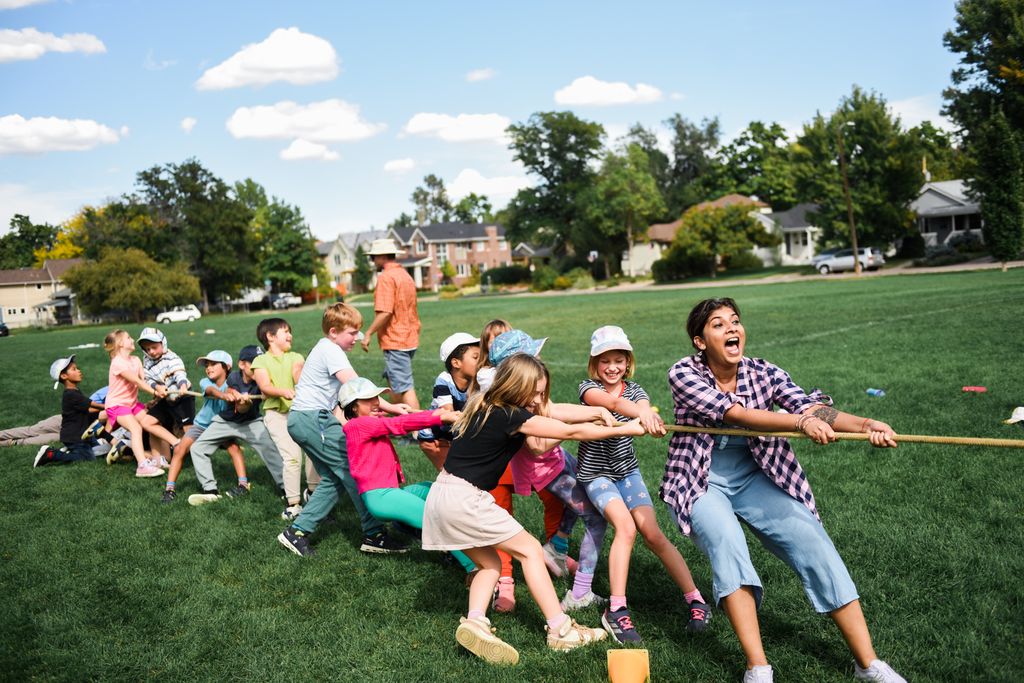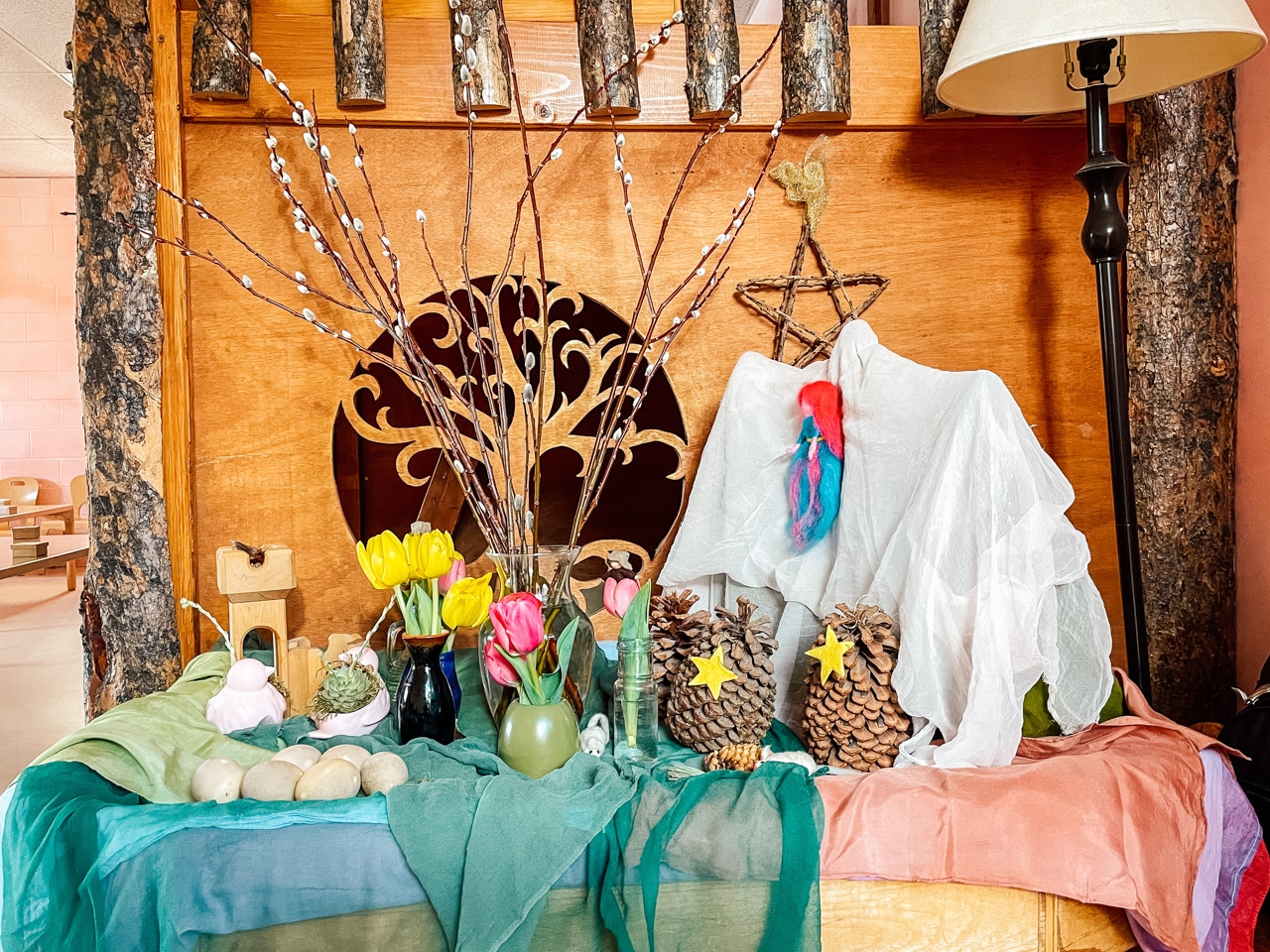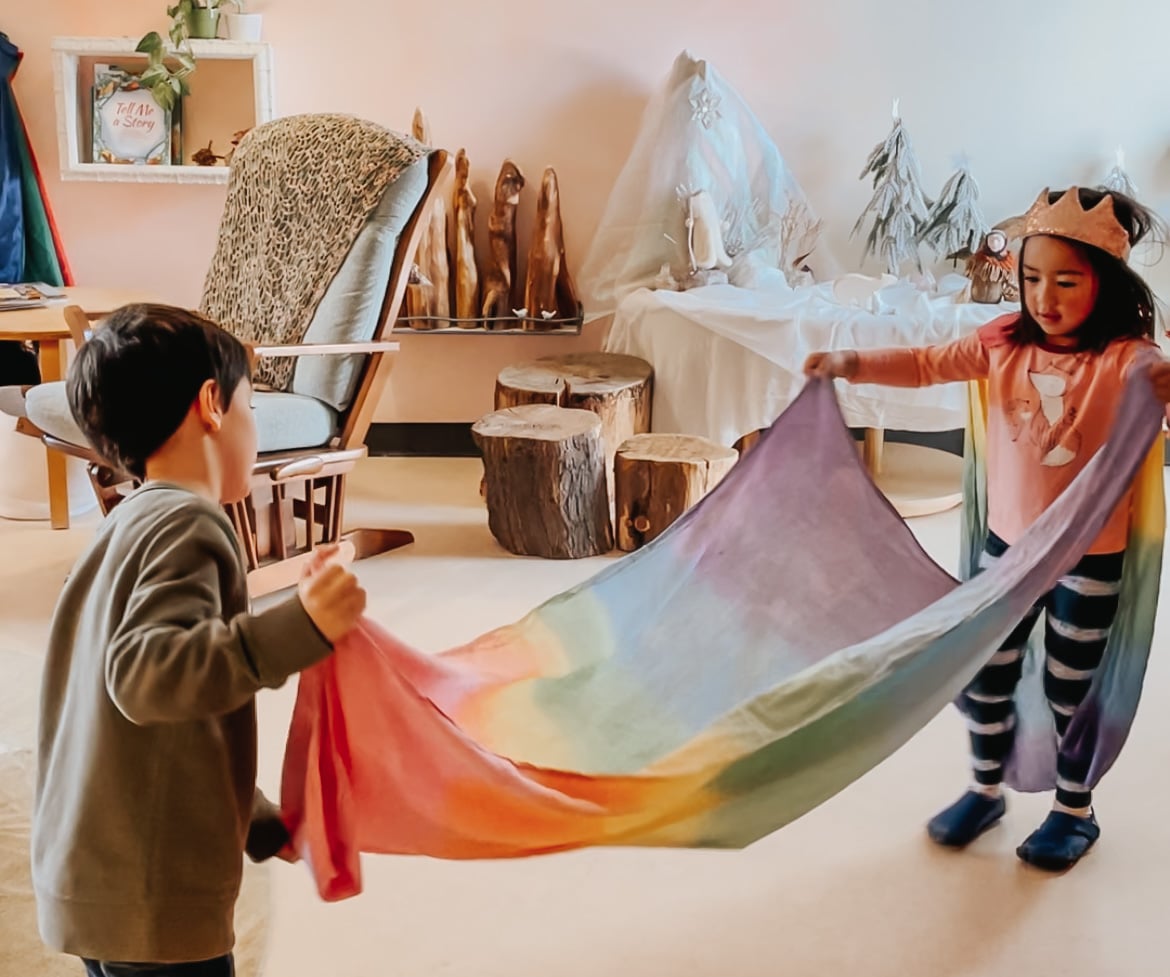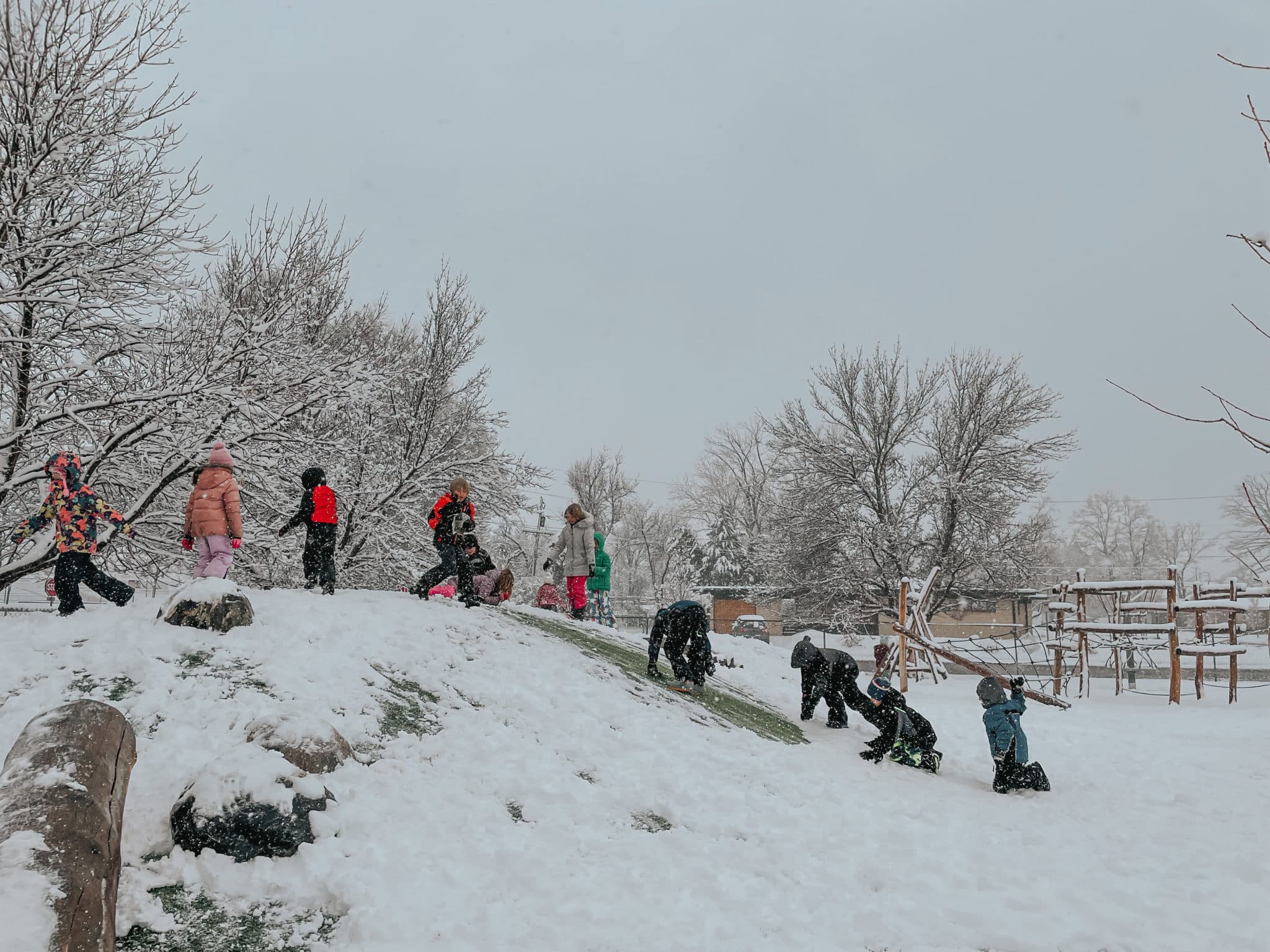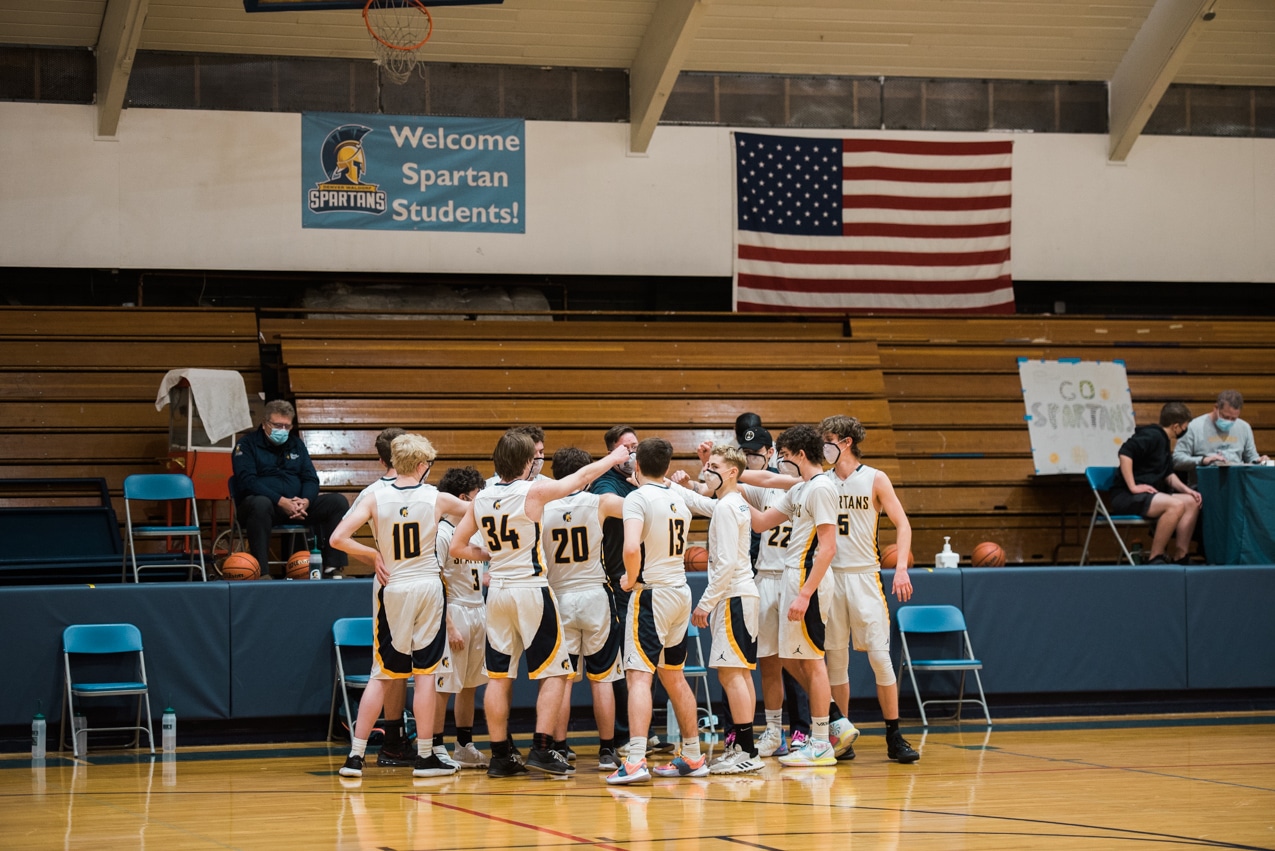The Light Within and With That We Share
It's the second Monday morning in December, which means the school will be gathering shortly in the Festival Hall for it's second Festival of Light Emerging assembly of the year. It is one of several holdings the students have a this time of year that allow them to live into the impusles that accompany the darkening days.
There is a busyness that’s easy to get enveloped in this time of year as parents and caregivers — a busyness driven by the desire to create joy for our loved ones and express our deepest gratitude. We can become swept up in the pressure to get it all 'right,' turning this busyness into overwhelm and making it difficult to find our own joy, which can feel elusive or lost altogether.
For our children, within these walls, things look quite different. This time of year is honored through a deepening practice of slowing down, quiet observation and reflection, and inward exploration. The darkening days provide the perfect canvas to journey inward, connect with the light that resides within, and bring it forward to illuminate the way for others. In this expression, we just might recognize the light in another as one we all share. This exploration of light begins with the Lantern Walk in the fall and continues through the Festival of Light Emerging, the Winter Spiral, and Santa Lucia.
Monday mornings in December begin with an all-school assembly honoring the Festival of Light Emerging. Our students join in a dimly lit Festival Hall where they are met with a familiar sequence of greetings, song, story, verse, and candle lighting — all wrapped in a dependable cloak of reverence. One student from each grade is tapped prior to the assembly to light a candle for their class. Starting with 12th and ending with 1st, they come to the stage one by one to light their candle from the same flame. This light then travels back to their classroom by way of their teacher, students following close behind.
This week, our students will walk the Winter Spiral. A pathway outlined in evergreens will form a spiral leading to a single candle lit at the center. Students will follow the spiral, unlit candle in hand, until they reach the light at the center, which they’ll use to light their own. On their path out — different from the one taken in — they will choose a place to set their now-lit candle, illuminating the way for those who follow. Although the spiral of carefully laid evergreens may appear unchanged, each individual’s journey within it will be distinctly different— inherently their own.
This Friday, each classroom will be visited by second graders, singing proudly and adorned in white tunics and handmade crowns. They'll bring Santa Lucia buns to share, a symbol of light and hope. They’ll carry a mood of reverence, extending a gesture of generosity, and be met with gratitude.
These are experiences aligned with the rhythm of the natural world, which call us to pause, to embrace the quiet moments, and to hold space for the light we carry within and the light we see in others. For our children, their education includes a foundation in the lifelong practice of journeying inward and an intrinsic desire to share their discoveries with others.
It makes me wonder for us as adults - in our busyness to share light with others, are we bypassing our journey inward? If so, what is it that we are truly sharing?
Unfolding these experiences, both within the school and within our homes, is not without effort. Maybe more so at this time of year, it can be difficult to decipher meaningful effort from the simple busyness that fills our days. A question to consider might be if our efforts are drawing us toward connection within ourselves and with one another or pulling us away. While everyone's journey is uniquely theirs to know, we can be respectful observers and provide one another grace for what cannot be seen. In the end, it's not doing it 'right' that brings us closer, but rather how we feel when we are together.
In this shared space of reflection and grace, we create a community that is deeply rooted in presence and understanding. May we continue to walk this path together, embracing the beauty of the season and the peace that comes when we allow ourselves to be led by its natural rhythm.
Shared with us by Alexandra Wheatlake, Community Liaison
How Waldorf Students Learn Without Textbooks
The absence of textbooks in Waldorf schools is often one of the first differences new families notice. To some, it feels unusual- even unsettling. But in truth, it reflects one of the deepest commitments of Waldorf education: that learning should be alive, creative, and rooted in the will of the student.
Instead of relying on pre-packaged content, Waldorf students create “main lesson books”- handmade records of their learning that combine writing, art, and reflection of the material brought to them throughout each 4 week block. These books are not mere assignments; they are acts of will. Each page requires the student to digest information, internalize it deeply, and then transform it into something meaningful. In this way, students aren’t just studying historical dates, authors names, or scientific formulas- they are carefully curating knowledge through their own effort.
The role of the teacher is equally transformative. Without a textbook to pull information from, Waldorf teachers fully immerse themselves in their subject. Lessons are not recited from a script, but woven together from diverse and creative sources- books, nature, field trips – their own lived experience and accounts of those that came before. This keeps content flexible and responsive to the times, allowing teachers to remain deeply relevant in a fast-changing world. To this effect, an artistic rendering of history may often be closer to truth than a standardized account in a textbook. Parents are often surprised at how rich these books become, not just in content but in the artistry and thoughtfulness behind them.
The implications for subjects like science and math are profound. Physics lessons, for example, begin with phenomena- a flame in a darkened room, a lever lifting a car- before moving toward concepts and theories. In math, students work through problems as living puzzles rather than rote drills, building confidence as well as understanding. This experiential, phenomena-first approach ensures that knowledge arises from observation and thought, not mere memorization.
Of course, the absence of textbooks does not mean the absence of rigor or thorough understanding. Waldorf teachers map their work carefully to state standards, ensuring that students are up to appropriate standards fully prepared for college admittance. In many cases, the curriculum goes beyond what is required, offering a richer and more integrated experience than traditional models.
To rely on a textbook is to accept a single lens on the world- one that is often shaped by politics or cultural bias. To teach without one is to embrace freedom, responsibility, and creativity. In doing so, Waldorf educators cultivate not only knowledgeable students but also independent thinkers who can meet the future with clarity and will.
'Tis the Season of Michaelmas
This week we celebrated Michaelmas — and with it, we welcome a new season.
In Waldorf education, we honor the turning of the seasons through festivals. These are more than celebrations — they turn our regard toward the rhythms of the Earth and offer an invitation to recalibrate, to harmonize with it.
At this time of year, within the walls of the school, glances of dismay are often exchanged at the entanglement and unfolding of circumstances. Inevitably, someone speaks “Michaelmas” into the space, and expressions soften — followed by a knowing, collective nod.
Michaelmas marks the beginning of the inward exploration that will continue through the winter months. This journey begins with uncovering the courage that lies within, so that we may face what lies ahead.
Michaelmas often appears as a series of calamities — false starts, a mirage of finish lines, unusual and unpredictable errors, and a gradual collapse of the confidences we claimed over the summer.
This is the work of ‘dragons’ — in full force — challenging us with great precision.
There is wisdom in their timing — rising as daylight shrinks, as darkness gains its foothold, and as the cool air draws us indoors. It is in the darkness — in our separation from one another and from the Earth — that they grow.
While no one can fight our dragons for us, or even often alongside us, others can help lift the shadows they cast. It is light that loosens their grip. When we allow others the honor of witnessing our battles, of witnessing our courage, we illuminate what was once murky, overwhelming, and isolating — not just within ourselves, but within those who witness us.
Are all dragons of this world external forces that we are called upon to vanquish? Or do some dragons serve as mirrors — revealing what lies within — asking not to be slain, but understood, worked with, tamed, even harnessed?
Though the days grow shorter, we are not without light. Though we travel inward, we are not retreating. This season primes us to find new sources of light and of strength — in ourselves, in each other, in our shared stories, and in the quiet resilience that rises when we walk together.
For our grades students, Michaelmas is songs, stories, verses, and poems of Michael and a Field Day filled with games that ignite their forces of will. For our High Schoolers, it is making ‘Fire Cider’ in cooking class, holding the Field Day games for our grades students, and for one lucky senior – playing the role of Michael cloaked in red and gold and wielding a sword of meteoric iron (cardboard)!
To support you in your journey and give you a window into your students’ lives at the school:
- Morning Singing - Michaelmas
- A guide to making Fire Cider
- The Reel composed by Sarah Box of Field Day
"Brave and true I will be.
Each good deed sets me free.
Each kind word makes me strong.
I will fight for the right, I will conquer the wrong"
Grateful to have this community to be brave with.
Bringing Waldorf Into the Home
The depth and wisdom of the Waldorf educational movement extends beyond our classrooms here at The Denver Waldorf School. In subtle yet impactful ways, families can integrate Waldorf philosophies into their home lives as well. But what does it mean to bring Waldorf into your home?
It isn’t just about playsilks, beeswax, beautiful wooden toys, a proper supply of woolies, paper stars hanging from the windows, or the absence of an always-on television (although we do love all these). Rather, it is about creating a thoughtful home-life around the values that we most cherish.
In doing so, we create a sense of purpose, familiarity, and joy for our children. By ensuring our home life and school life complement each other, our children have a sense of security in knowing what to expect.
Here are a few ways to bring Waldorf into your day-to-day home life:
- Rhythm. Rhythm and consistency calm our children’s, and our, nervous systems, in turn creating more peace and less stress in our homes. Just ask a kindergartener what day it is and you’ll likely get the answer “bread day” or “soup day.” Establishing a daily, weekly and seasonal rhythm in our home creates a sense of stability for our children, as they know what to expect.
It isn’t a strict schedule to follow, where if we don’t stick to it we’ve failed. Instead, it’s a gentle way to guide us through our days. Just like when we breathe in and out, our days can reflect that same rhythm — the in-breath in which we embrace the quiet (for example, reading a story), followed by the out-breath in which we embrace the world around us (such as going for a walk around the block). Likewise, we can be intentional about doing the same thing on the same day of the week, such as laundry, going to the library, or other daily tasks which we can include our children.
Living into the seasons by taking the time to notice what is going on around us in the natural world —the first springs of green grass or new birds chirping — reminds us where we are in the world. We can create a little place where we invite nature into our homes to connect us to the world we share - a few pinecones in winter or treasures collected on a walk.
If you find you have no rhythm today, start with something very small — light a candle before dinner, take a walk around the block each morning, or sing the same song at bedtime.
- Simplicity. In a world that pushes us to fill our lives with more, we can find ourselves overwhelmed by the sheer enormity of the day ahead of us. Embracing simplicity, however, reminds us that we do not have to do “all the things, all at once.”
As parents we want the best for our children, and so understandably we feel an impulse to fill our children’s lives with ever-growing “enrichment” opportunities (be it music, sports, extra curriculars, and the list goes on and on). However, more is not always better; in fact, oftentimes, the practice of too-much-too-soon overwhelms our families and counteracts healthful growth and intellectual stimulation.
Allowing ourselves to slow down, simplify our days, and invite our children into everyday life helps center them and gives them a place within the family. Young children are eager to help prepare meals, wash dishes, do laundry, sweep the floor and many other daily tasks. When we include them in the act of caring for our environment, and doing it with intention, we are planting the seeds of compassion and care for the world all around us.
- Free, unstructured play in nature. Children’s lives, and our lives as parents, are often scheduled from the moment we wake up to the moment we go to bed. In our busy lives, sometimes we need to remember the power and importance of downtime and how important healthy free play is. Play is the job of children, it is how they make sense of the world around them. All of the impressions our children take in during the day – whether is it from screens, a simple trip to the grocery store, or a day at school — must be processed, and the way children make sense of what they have seen and done is through free, unstructured play. Ensuring we incorporate free play in nature every day allows our children to make sense of the world around them and keeps them from becoming overwhelmed. Nature is the easiest, and best, reset when our children, or we as parents, become overwhelmed.
By taking a few conscious steps to bring rhythm, simplicity, and play into our days we can create a home life that reflects our values and which translates into less anxious children and adults — leaving room for growth and a love for the world all around us.
The Role of Rhythm in Waldorf Education
Breathe in, breathe out. Look inwards, look outwards. Nourish the inner life, nourish the outer life. This is the rhythm of a Waldorf education.
Beginning in our early childhood programs and extending through the high school years, rhythm plays an integral role in our students’ lives. A predictable cycle of outbreaths and inbreaths allows our students to meet life’s challenges with confidence and to engage their senses fully in the tasks at hand. Rhythm inspires healthy habits, positive inward reflection, and enthusiastic exploration of the outside world.
So, how does DWS establish rhythm from an early age? We go about our days and weeks with a predictable routine that balances outbreaths with inbreaths, time to engage socially in the world, and time to reflect in the inner world.
For our younger students in the early childhood program, an outbreath can be expressed through a period of free play outside. With our teachers reflecting a loving presence, the children are free to play – to demonstrate their capabilities without direct guidance, to make sense and to make joy of the world in their own unique ways.
After this outbreath of play, the students return inside for an inbreath. The children may gather for circle time, for a story to be read, to hold onto their inner imaginations, to come together peacefully.
The outbreath returns for a walk outside – to feel the sun’s warmth, to watch the geese fly above Harvard Gulch Park, to just get those little legs and hearts pumping. During the colder winter months, the walk may be shorter but the rhythm remains. Circle time, followed by the walk.
When the students return inside after their walk, they enjoy warm tea together – quite literally feeling inner warmth return. The teacher may light a candle, narrowing their focus from all that is going on outside to that single point of warmth inside.
And so the day continues in our kindergartens – bread is baked, play is embraced, stories are told, songs are sung. A natural flow carries us from activity to activity.
There is also rhythm within our week. The children often know the days of the week by the dedicated snack or activity of the day - is it "soup day" or is it "oatmeal day?" There is predictability and consistency, which helps foster a sense of comfort and security within the children.
And this rhythm, this predictable balance, continues throughout the elementary, middle, and high school years. While the expressions of inward and outbreaths change with the students’ maturity, the importance of establishing a rhythm continues.
In fact, the ebbs and flows of a daily rhythm are crucial for the well-being of teachers and parents as well. Finding a comfortable rhythm helps us to remain centered and grounded when life becomes unpredictable. A daily rhythm can help us reset our focus and build our resolve.
Knowing how to breathe in deeply and exhale fully are life skills that stay with our students for all their years to come.
If you'd like to learn more about the importance of rhythm in early childhood, you can listen to our podcast with Clair Boswell, who leads our "Sweat Peas" parent-tot program.
Beyond the Classroom - Heeding the Call for Time Outside
When you ask parents about the happiest moments of their childhoods, you often hear stories about time spent outside — the family camping trip, the simple times in the backyard underneath the shade of an apple tree, the make-believe games that emerged in the outdoors, the sense of discovery and freedom while biking with friends, the awe of laying beneath a night sky replete with stars.
At an intuitive level, we all understand that kids need time outside, and that kids can learn so much while outdoors. Nevertheless, we are living through an era in which too few kids have sufficient time outdoors.
Fortunately, this trend of short-changing time outside is beginning to change. In the September edition of Outside Magazine, Emily Sohn chronicles this shift in Classrooms Without Walls. She notes that “a movement to ensure students receive ample outside time has been ramping up, a rare positive side to the pandemic.”
As the pandemic pushed many aspects of life outside, educators began to re-emphasize the outdoors — embracing school gardens, the joy of recess, and myriad learning opportunities that only the outdoors can offer. Jeanne McCarty, the CEO of Out Teach, a nonprofit that trains teachers how to offer experiential lessons outdoors, notes: “More than ever before, there’s an appetite to reimagine learning, and outdoor instruction can be a key component of that.”
At The Denver Waldorf School, we have always understood that a connection to nature is foundational to our learning as we cultivate a love for the world around us. We lean into the wisdom of time spent outside, and we embrace the learning opportunities, the growth, and the discovery that the outdoors provide.
It may seem odd that an urban school in a rapidly growing city would nurture a strong connection to the great outdoors, but that is precisely what we do — nurture connections to all that is beautiful and good within nature. And thankfully, there are many parks, gardens, and gulches that surround our urban campus as well as mountains, rivers, forests, and spaces beyond!
Whether it's our 3rd graders working their hands in the school plots at the Rosedale Community Garden, the 12th graders doing plein air painting in Harvard Gulch, or the 5th graders studying the living world through botany - our lessons often extend beyond our physical classrooms on an everyday basis.
On special class field trips, you can find our younger grades exploring a state park, or experiencing their first camping trip together. Our annual class trips for our older grades are a beloved aspect of our education – whether it's a week-long river trip or a field trip to the farm, class trips provide the opportunity to deepen our relationship with nature and one another - allowing plenty of time for exploration as well as service!
And of course we make plenty of room for play during outdoor recess in all seasons! Free play in the outdoors is a breath out for our students after taking in an academic lesson - giving room for movement to keep our students engaged and ready to learn.
We are always grateful to be able to soak in the many benefits that nature provides for social, emotional, physical, and academic development.
Waldorf Window Stars
How to Make Waldorf Window Stars
Truth, beauty and goodness are core tenets of Waldorf education. We surround ourselves with wonder and beauty to awaken our spirits and inspire our learning. There is a movement to display rainbows- which symbolize peace and serenity, hope and promise- in our windows at home to bring light and connection to all who walk by. Waldorf window stars have long been a favorite way to brighten our classrooms and homes, and in rainbow colors, we love how they contribute to the optimism of this movement. This is an activity that can be shared easily with little hands to bring happiness to our homes and community! Below we share this simple Waldorf window star tutorial with your families.

Materials
– Kite paper
– Glue stick or glue
– Scissors or paper cutter (if you need to resize your kite paper)
Instructions
Step 1.
Resize your kite paper if needed. The paper we used was 6.3″ x 6.3″, and we cut it into quarters so that we could make smaller stars to fit our window space.
Step 2.
Arrange your prepared pieces of paper in the order that you want your star points to be- you will have eight points, so you need eight pieces of paper!

Step 3.
Fold your first square in half

Step 4.
With your paper still folded in half, fold in half again

Step 5.
Open up your paper completely, and then fold one corner into the middle

Step 6.
Repeat step 5 with each remaining corner

Step 7.
Fold in two sides so they meet in a straight line at the center

Step 8.
Repeat steps 3 through 7 for remaining papers
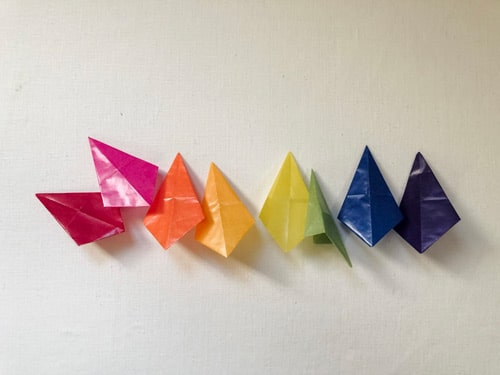
Step 9.
Begin gluing your star points together

Step 10.
Continue working around your star, gluing each at the center

Step 11.
Make sure your star is dry, and then hang it in your window to spread beauty, light, and love!

Why We All Play
How do we develop confident, creative, and joyful student-athletes who champion teamwork, participation, and growth? That is the question that drives our athletics program at The Denver Waldorf School.
This ethos begins with a simple no-cut commitment: any DWS student who wishes to play a sport will have that chance. Whether it’s cross country, volleyball, basketball, or ultimate frisbee, our coaches embrace the opportunity to help each and every student grow and develop their talents and work ethic.
Too often, however, youth athletics are plagued by a very different ethos—one that values that domination, recognition, and exclusivity above all else. In Beyond Winning, Waldorf educator and author, Kim John Payne, laid bare the pitfalls of this mindset:
“[T]he obsession with early success in a win-at-all costs culture has created a pressure chamber in which top prospects, even at the age of five or six, are funneled into elite programs while the majority of kids . . . are robbed of the opportunity to discover and develop their talents . . . The result is a youth sports landscape pockmarked with children who end up—at age eleven or twelve—with fractured egos, low self-esteem, and, in some cases, severe physical injuries. It’s why millions of American kids quit organized sports just as they become teenagers.”– Kim John Payne, Luis Fernando Llosa & Scott Lancaster, Beyond Winning: Smart Parenting in a Toxic Sports Environment (2013).
As a school committed to developing the whole child (head, heart, and hands), we believe athletics should boost our students’ understanding of self-worth, increase their self-esteem, and promote health and wellbeing. In short, we believe physical activity through sports is an opportunity for healthful growth.
It’s also the smart tactic to nurture joyful love of sport. As Payne points out, almost three-quarters of America’s youth quit organized sports by age thirteen — precisely at the age when sports can be taken more seriously and occupy a more central role in healthy development.
Imagine a sports culture where our teenage athletes experience joy instead of burnout, embrace team success over individual glory, and value participation over exclusion. By creating a healthy sports culture within DWS, we make these goals into our reality.
We create a culture that nourishes the hearts, souls, bodies, and minds of every student-athlete. It begins with a commitment to let everyone participate, and this is why we all play.
Star Wand Tutorial

As part of our Winter Fair at Home this past holiday season, many of our families were able to experience the joy of the children’s activities together at home with our assembled craft kits. One of our much loved craft activities was a star wand, and today we are sharing a variation that you can make with materials you likely already have at home. We used some scrap fabric, felt, and used holiday ribbons making it a perfect upcycled project too.
The satisfaction of making and crafting by hand has always played an important role in our Waldorf curriculum. Stitch by stitch, we learn to appreciate the materials, the process, and the capabilities of our own creativity. We develop patience, fine motor skills, and confidence. And with this star wand, we bring a touch of magic to our days! Enjoy.
Materials
– wooden stick or dowel
– scrap fabric for one side of star
– felt for other side of star
– ribbons
– embroidery thread or thin yarn
– wool roving or scrap fabric for stuffing (optional)
– hot glue

Instructions
Step 1. Trace the 3″ star pattern (or make your own!) onto the scrap fabric and felt.
Step 2. Cut stars out and stack together.
Step 3. Knot one end of thread and begin stitching the stars together at the bottom (we used blanket stitch).


Step 4. When stitched 3/4 of the way…pause. Add wool roving as stuffing (optional), and place end of ribbons into star. Continue stitching so that ribbons are sewn into star.

Step 5. Stop stitching just before you meet where you began, leaving a small hole for the wooden stick or dowel. Tie thread off securely and sew end of thread inside of star.

Step 6. Add a small amount of glue inside of star and place the end of the wooden stick into star. Press star around wooden stick to secure.

Step 7. Make all the magic!

Developing the Vestibular Sense
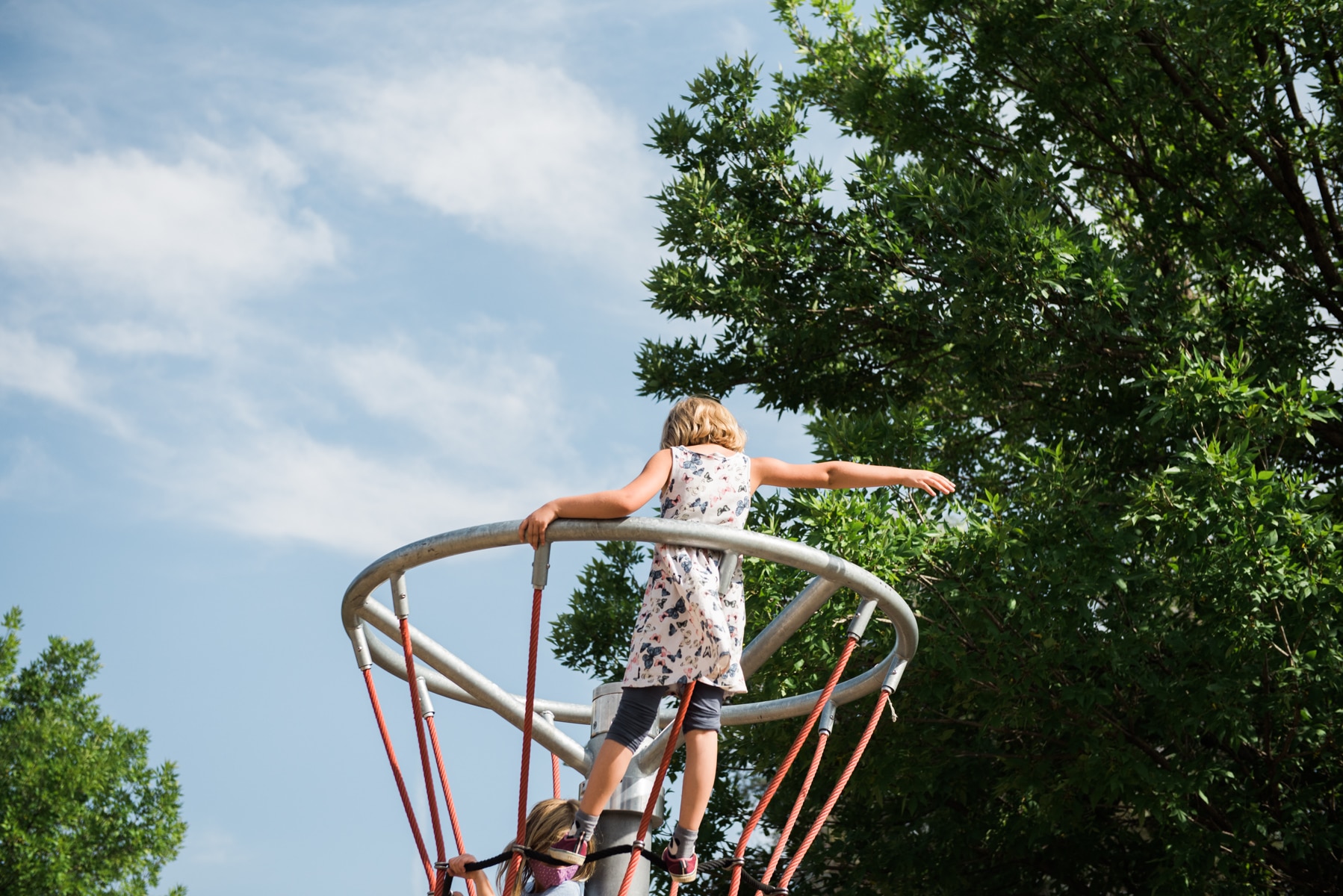
Children love to play. They swing, spin, somersault, and move every way they can. This isn’t just coincidence that when we allow the space and freedom to play, children will gravitate towards these experiences. These movements and activities all work to strengthen their vestibular sense- the balance sense.
This vestibular sense tells us where we are in relation to the earth and its gravity. The vestibular sensory organs – the semicircular canals – are located in the inner ear. Movement of the head in any and all directions stimulates the fluid in these chambers, informing our brains of our body position in relation to all that is around us. As children are able to move about, engaging their vestibular sense, they are developing and strengthening this ever important sense of balance.
However, it has to do with even more though than just balance. As our own Nancy Blanning and Laurie Clark have noted in their article Strengthening the Foundational Senses of the Young Child, “The importance of this sense of balance cannot be overemphasized. It is a unifying element in the whole system and seems to prime the entire nervous system to function properly.” The healthy development of the foundational senses in the young child serves as the strong roots for all higher level learning- both in childhood and throughout life. As Nancy and Laurie have noted, “When the foundational senses are functioning well, the child has pleasure and joy in being within his/her body. He moves in a balanced, coordinated, integrated way. He is eager to explore the world and new sensory experiences, and is not timid. The child is well-balanced, both literally and metaphorically.”
Our daily activities during our time together at The Denver Waldorf School aim to strengthen the vestibular sense, and all of our primary senses. The emphasis on the importance of free play, the movement and rhythmic games incorporated into our learning, and the exploration of nature and the outdoors, no matter the weather, are all intentional building blocks to giving our children a strong foundation for their healthy development.
